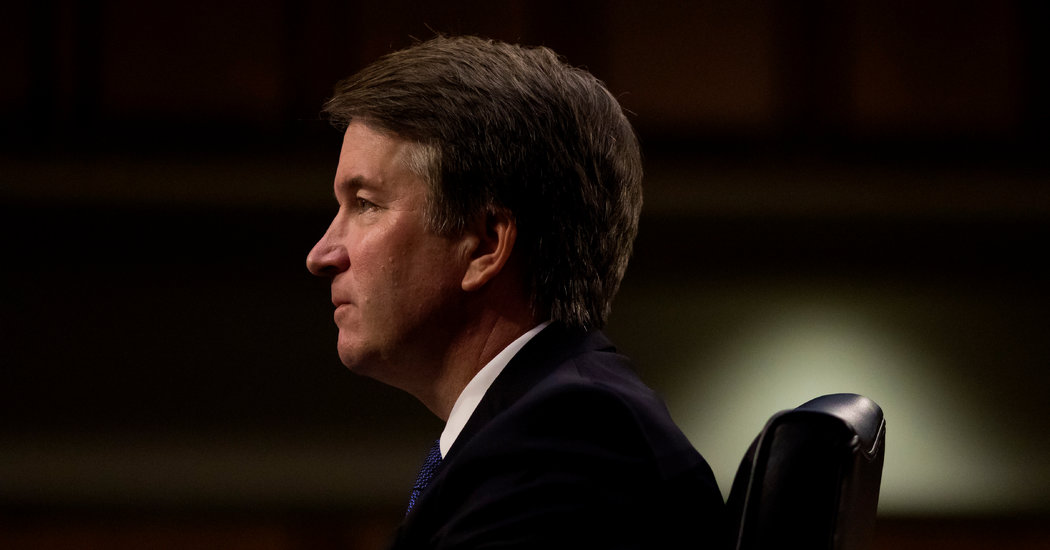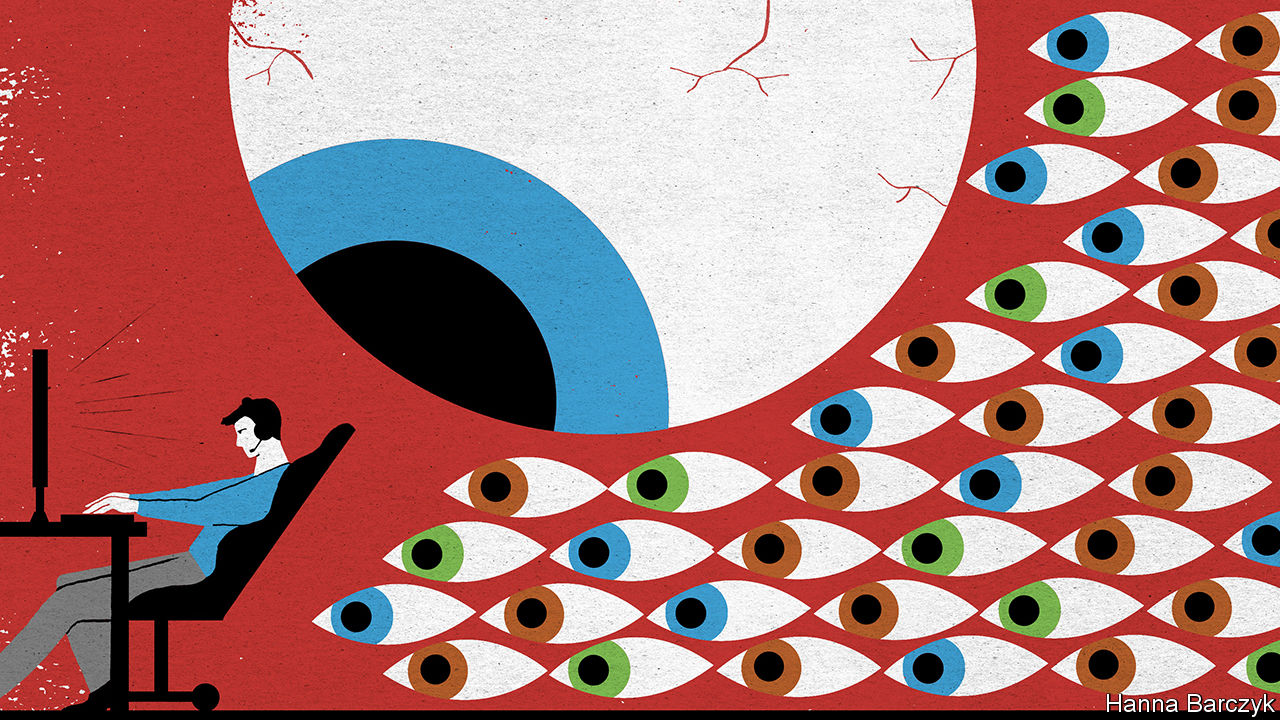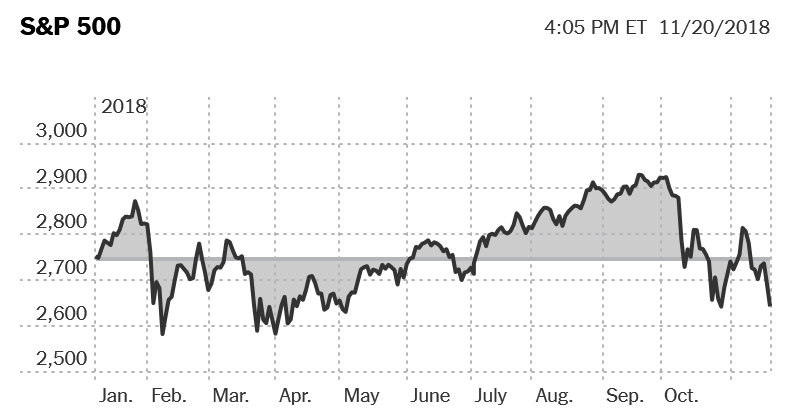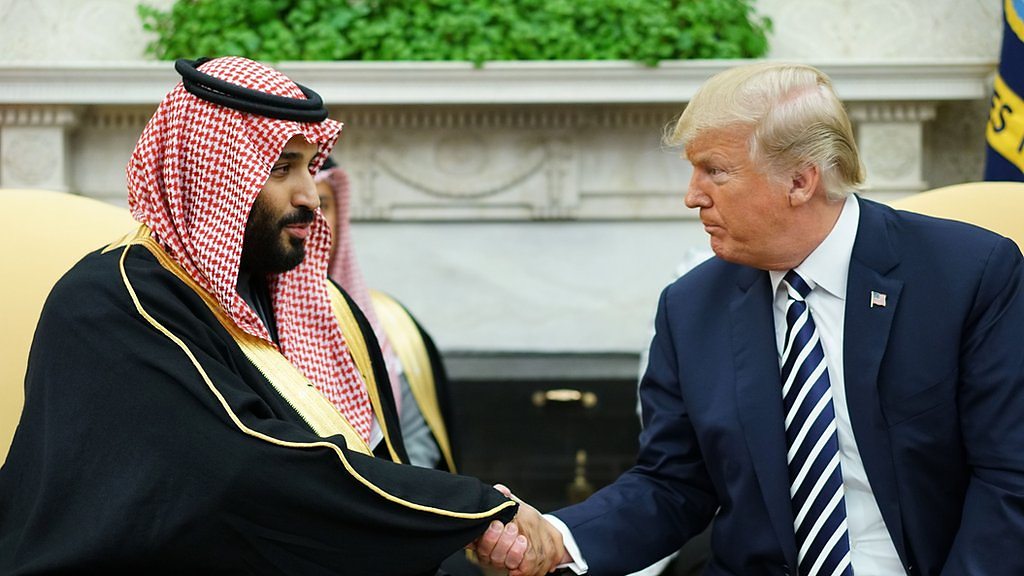But Mr. Leahy indicated that documents marked “committee confidential” show that Manuel Miranda, then a Republican staffer on the Judiciary Committee, had sent Judge Kavanaugh emails about Mr. Leahy’s private concerns about a judicial nominee whose hearing was coming up and a draft letter Mr. Leahy had not yet sent. He also suggested that the files may show that Mr. Miranda made a reference to having a mole on the committee or spying on Democrats, and that Mr. Miranda may have suggested meeting outside of their workplaces. The senator also indicated that Mr. Kavanaugh may have had some involvement with a memo written by John Yoo, who was an attorney in the Justice Department’s Office of Legal Counsel who wrote opinions secretly blessing the surveillance program as lawful.
Judge Kavanaugh insisted that everything he had testified before was “100 percent accurate,” but indicated that he was not sure what Mr. Leahy was referring to. Mr. Leahy asked Mr. Grassley to lift the confidentiality protections over the emails in question so he and Judge Kavanaugh could discuss them in his second round of questioning, and Mr. Grassley indicated he would look at them.
“I am concerned because there is evidence that Mr. Miranda provided you with materials that were stolen from me,” Mr. Leahy said. “And that would contradict your prior testimony. It is also clear from public emails — and I’m refraining from going into nonpublic ones — that you had reason to believe materials were obtained inappropriately at the time.”
Kavanaugh says he’ll respect abortion’s “precedent on precedent.”
Judge Kavanaugh, under attack from progressives and Democrats who say he will roll back abortion rights, asserted that he understood the significance of the issue and would respect the Supreme Court’s “precedent on precedent.”
“I don’t live in a bubble. I understand I live in the real world,” he said, after Ms. Feinstein reminded him of the “death tolls in this country” among women who tried to end their own pregnancies before Roe v. Wade, the landmark 1973 decision establishing a constitutional right to abortion.
“I understand your point of view on that and I understand how passionate and how deeply people feel about this issue,” he said.
Senator Feinstein did not ask him the operative question — Does he believe Roe was correctly decided? — but even if she had, he had already told Senator Grassley it would not be appropriate to answer it. She did ask him what he meant when he told Senator Susan Collins, Republican of Maine, that he believed Roe was “settled law.” At that, he launched into a discourse on the value of precedent.
Judge Kavanaugh said that Roe was “settled as a precedent of the Supreme Court,” and as such, deserves respect from judges who took note of it. But then he noted a subsequent case, the 1992 case of Planned Parenthood v. Casey, which narrowed the scope of Roe, at the same time that it reaffirmed Roe as a precedent.
Casey, which gave states the authority to regulate abortion so long as those regulations do not pose an “undue burden” on the woman, is “precedent on precedent,” he said.
His comments were a reminder that, as Senator Chuck Schumer, the Democratic leader, has often pointed out, precedents are only settled law until the Supreme Court unsettles them. Democrats complain that previous nominees have pledged to respect precedents, only to narrow or overturn them once seated on the court.
Credit
Erin Schaff for The New York Times
What about this abortion precedent?
One opinion of intense interest to Democrats is Judge Kavanaugh’s dissent in the 2017 case Garza v. Hargan, which involved a pregnant, 17-year-old undocumented immigrant whom the Trump administration tried to block from having an immediate abortion.
Judge Kavanaugh sided with the administration in arguing that the teen should have been transferred to the care of an “immigration sponsor” — a family member or friend — before being allowed terminate her pregnancy. Under questioning from Senator Richard J. Durbin, Democrat of Illinois, he said he was only following Supreme Court precedent, though he conceded, “There is no case on exact point.”
So, Judge Kavanaugh said, he rooted his dissent in Supreme Court cases that have permitted states to require pregnant teens to obtain the consent of their parents for an abortion. Mr. Durbin objected, suggesting that Texas, where the girl was housed in an immigration facility, had imposed no such requirement on her.
“You are adding a requirement here,” the senator said.
“I’m not adding. I’m a judge. The policy has been made by others,” Judge Kavanaugh replied. “I’m deciding whether the policy is consistent with Supreme Court precedent.”
“I did my level best in an emergency posture,” he added.
Can President Trump pardon himself? Hmm.
Senator Patrick J. Leahy, Democrat of Vermont, put that question directly to Judge Kavanaugh.
If Mr. Leahy thought he was going to get a direct answer to the direct question, he was mistaken.
Leahy: “President Trump claims he has an absolute right to pardon himself. Does he?”
Kavanaugh: “The question of self-pardons is something I’ve never analyzed. It’s a question I have not written about… It’s a hypothetical question that I can’t begin to answer in this context” pic.twitter.com/N91BYOuqKV—
NBC Politics (@NBCPolitics)
Sept. 5, 2018
“The question of self pardons is something I’ve never analyzed,” Judge Kavanaugh said, adding: “I can’t begin to answer in this context as a sitting judge and a nominee to the Supreme Court.”
Mr. Leahy pressed anyway, asking whether the president could pardon associates to keep them from testifying against him. Again, Judge Kavanaugh dodged the question, saying that as a judge, he would normally receive briefs and arguments from both sides before coming to a conclusion.
“I’m not going to answer hypothetical questions of that sort,” he said.
Can a president be subpoenaed? No comment
Pressed by Ms. Feinstein, Judge Kavanaugh refused to say whether he would rule that the Constitution permits a sitting president to be subpoenaed for testimony. He said that as a “matter of judicial independence,” he would not give the Senate a “precise answer on a hypothetical that might come before me.”
Sen. Feinstein: “Can a sitting president be required to respond to a subpoena?”
Kavanaugh: “As a matter of the canons of judicial independence, I can’t give you an answer on that hypothetical question.” pic.twitter.com/cQhxUmxJH9—
Axios (@axios)
Sept. 5, 2018
The potential for a legal fight over a presidential subpoena has become a hot topic amid speculation that Robert S. Mueller III, the special counsel investigating Russia’s interference in the 2016 campaign, may issue a subpoena for President Trump. Lawyers for the president and the office of the special counsel have been negotiating for months over whether Mr. Trump will voluntarily sit for an interview, so far without success.
In 1974, the Supreme Court unanimously ruled in United States v. Nixon that a sitting president — in that case Richard M. Nixon — could be subpoenaed for documents and records like the Watergate tape recordings. But the court has never addressed the question of whether a sitting president could be forced to answer questions, which raises additional issues about the time it would take to prepare and the potential distraction from carrying out his constitutional duties.
Noting that Chief Justice Warren Burger, who wrote the ruling, had been appointed by President Nixon, Judge Kavanaugh said he thought the Watergate tapes ruling was “one of the greatest moments” in the Supreme Court’s history because it stood up for judicial independence in the face of political pressure, but how that precedent “would apply to other hypotheticals” — like whether a subpoena for presidential testimony in a criminal investigation should also be upheld — was something he should not address, citing the practice of previous Supreme Court nominees.
Judge Kavanaugh was a prosecutor working for Ken Starr when the independent counsel issued a subpoena to Mr. Clinton. But Mr. Clinton’s legal team negotiated a deal whereby he testified voluntarily before a grand jury, and Mr. Starr withdrew the subpoena, so the issue was never adjudicated. Years later, after working in the Bush administration after the Sept. 11 attacks, Judge Kavanaugh said that he thought presidents should be temporarily shielded from criminal investigation while they were in office, although he left it ambiguous as to whether he thought that was a change Congress should make or that the Constitution might already allow.
Kavanaugh cites Nixon to assert his independence
Answering the very first question on Wednesday, from Senator Grassley, the Judiciary Committee chairman, Judge Kavanaugh said he would be an independent justice. He cited three Supreme Court landmarks to make his case.
Two were predictable: Brown v. Board of Education, the 1954 decision that ruled segregated public schools unconstitutional, and Youngstown Sheet and Tube Company v. Sawyer, the 1952 decision rejecting President Harry S. Truman’s attempt to seize the nation’s steel mills to aid the war effort in Korea.
The third was notable: United States v. Nixon, the 1974 decision in which Supreme Court unanimously ruled that President Nixon had to comply with a subpoena seeking tapes of his conversations in the Oval Office.
The Future of Roe v. Wade: 3 Scenarios, Explained
Will a Supreme Court with two Trump-appointed justices overrule the right to an abortion? It’s possible, but not the most likely outcome. Adam Liptak, The Times’s Supreme Court reporter, explains.
By ADAM LIPTAK, ROBIN STEIN, AARON BYRD, NATALIE RENEAU, ANJALI SINGHVI and JONAH M. KESSEL on Publish Date August 10, 2018.
.
Judge Kavanaugh has not always been unequivocal in his support for the decision. In a 1999 transcript of a round-table discussion, he said, “Maybe Nixon was wrongly decided — heresy though it is to say so.” His allies have said he meant the statement as a critique of the legal strategy of President Bill Clinton’s lawyers.
On Wednesday, Judge Kavanaugh’s said the message of the decision, which he called one of the greatest moments in American judicial history, was clear. “No one is above the law in our constitutional system,” he said.
Kavanaugh says he is not anti-regulation.
An abstract but important part of Judge Kavanaugh’s judicial philosophy is his skeptical approach to so-called Chevron deference, the principle that when a statute granting a regulatory agency the authority to make rules about a certain topic — such as protections for the environment, consumers, or workers — are ambiguous, the courts should accept the agency’s interpretation that it has the power to make a rule.
Corporations opposed to what they see as overly burdensome regulations want the Supreme Court to overturn or narrow the Chevron ruling, making it harder for executive agencies to expand into new areas.
Questioned about his view of the powers of administrative agencies by Senator Orrin G. Hatch, Republican of Utah, Judge Kavanaugh touted several rulings in which he had upheld environmental regulations rather than striking them down, but he gave little sign of support for Chevron deference, insisting instead that executive branch agencies must not be permitted to “rewrite” laws passed by Congress to expand its authority.
“I’ve heard it said that I’m a skeptic of regulation,” he said. “I’m not a skeptic of regulation at all. I’m a skeptic of unauthorized regulation, of illegal regulation, of regulation that is outside the bounds of what the laws passed by Congress have said.”
Kavanaugh defends his earlier testimony about torture
Back in 2006, Judge Kavanaugh testified during his appeals court confirmation that he was “not involved in the questions about the rules governing detention of combatants” while working in a George W. Bush White House that was wrestling with the handling of terrorism suspects.
Instead, he said, his portfolio focused on “civil justice issues” like terrorism insurance.
Mr. Durbin was having none of it. It has since emerged that Judge Kavanaugh was involved in a Bush White House discussion about whether American citizens being held as enemy combatants should get access to lawyers, the senator said, and that the nominee had volunteered to prepare a Justice Department official for testimony about monitoring attorney-client conversations of terrorism-related federal inmates. He also said Judge Kavanaugh had privately admitted involvement in a December 2005 signing statement by President Bush that asserted a right to bypass a newly tightened torture ban.
“You went further than you should have,” Mr. Durbin said. “In the three specific instances I gave you, you clearly were involved in questions about rules governing detention of combatants.”
But Judge Kavanaugh defended his testimony as accurate. Among other things, he said his statement that he was “not involved” — which came in response to a question 12 years ago from Mr. Durbin — was a reference to the Bush administration’s so-called enhanced interrogation program, not terrorism prisoners generally.
“I was not read into that program,” he said. “I told the truth about that.”
He also said that while, as White House staff secretary in December 2005, he passed the torture ban signing statement onto Mr. Bush for his signature, it was the White House counsel — Harriet Miers — who controlled the text of that document.
“I can’t recall what I said” about the torture ban signing statement, Judge Kavanaugh said. “I do recall that there was a good deal of internal debate about that signing statement, as you can imagine there would be. I remember that it was controversial internally.”
‘Sham president, sham justice’
The second day of Judge Kavanaugh’s hearings started with still more protests — just as Senator Grassley opened with a hope that the proceedings would be under more control than Tuesday’s divisive opening. One woman was led out shouting “sham president, sham justice.”
In his opening remarks, Mr. Grassley accused Democrats — who strategized for the hearing on a conference call Monday — of colluding with protesters to disrupt the hearing.
“NBC News reported that Democratic members of the committee plotted with minority leaders to disrupt the hearing yesterday,” he said. “Democratic senators interrupted the hearing 63 times before lunch, and in the audience, 70 people were arrested yesterday who were following their lead.”
Credit
Erin Schaff for The New York Times
But one of the protesters took exception to Mr. Grassley’s assertion, since, she said, she was calling out Democratic leaders such as Mr. Durbin for their tepid efforts to thwart the nominee. And a spokesman for Mr. Schumer said there was no coordination.
Watch: Judge Brett Kavanaugh’s Opening Statement
Judge Brett M. Kavanaugh, President Trump’s nominee to the Supreme Court, appeared before the Senate Judiciary Committee for the first day of his confirmation hearing.
By THE ASSOCIATED PRESS.
Photo by Eric Thayer for The New York Times.
Ken Starr redux
In the 1990s, as a prosecutor in Mr. Starr’s Monica Lewinsky investigation, Judge Kavanaugh supported aggressive questioning of former President Bill Clinton about his sexual relations with the former White House intern.
Years later, however, Mr. Kavanaugh expressed regret about that view, suggesting that sitting presidents should not be subjected to the kind of distracting investigations that helped subject Mr. Clinton to as part of the Starr investigation.
That shift in views has prompted Democrats to assert that Mr. Kavanaugh would try to protect Mr. Trump from Mr. Mueller’s Russia investigation. Ms. Feinstein pressed Judge Kavanaugh on that point on Wednesday.
Mr. Kavanaugh said his views changed after he watched former President George W. Bush deal with the Sept. 11 terrorist attacks and their aftermath, and concluded that presidents should not be distracted from important crises like that by having to respond to investigations such as the one that Mr. Clinton faced.
“September 11 — that’s what changed,” he told Ms. Feinstein. He added, however, that his comments about potential changes to the statutes governing investigations of presidents do not reflect his thinking on the question of whether the Constitution would allow such investigations to proceed.
“If a case came up where someone was trying to say this was a constitutional principle, I would have a completely open mind on that,” he said.
A “gut punch” on sexual harassment but no “guilt by association”
Critics of Judge Kavanaugh have noted that he clerked for a former 9th Circuit Court of Appeals judge, Alex Kozinski, who has been accused of sexually harassing more than a dozen women. They assert that Mr. Kavanaugh must have known about the allegations long before they were made public.
Senator Hatch came to Judge Kavanaugh’s defense, calling such accusations against Mr. Kavanaugh “guilt by association,” but asked a series of gentle questions designed to give the judge an opportunity to deny them. He did just that, seeking to put distance between himself and any hint that he knew of or condoned the judge’s behavior.
“Did you know anything about these allegations” against Judge Kozinski? Mr. Hatch asked.
“Nothing,” Mr. Kavanaugh responded, adding a moment later: “When they became public, the first thought I had was no woman should be subjected to harassment in the workplace, including in the judiciary, especially in the judiciary.”
He went on: “It was a gut punch for me. It was a gut punch for the judiciary. I was shocked, disappointed, angry — swirl of emotions.”
Ove rall, Judge Kavanaugh has gone out of his way to extol his record on women. He said he has made an aggressive effort to hire female clerks. Twenty-five of the 48 clerks that Judge Kavanaugh has hired during his 12 years on the appeals court have been women, and 21 have gone on to clerk at the Supreme Court, he told the committee.
He said he was spurred to do so by an article in The New York Times by Linda Greenhouse, the newspaper’s former Supreme Court correspondent, who wrote in 2006, the same year Judge Kavanaugh joined the court, about the paucity of female clerks on the Supreme Court. Judge Kavanaugh said that troubled him, calling it “unacceptable.” He hired three women (out of four clerks) for his first year on the bench, adding that the next generation of leaders and Supreme Court justices will be drawn from the ranks of that generation.
“It’s something I’m very focused on at all times,” he said.
Kavanaugh and Osama bin Laden’s bodyguard
Judge Kavanaugh held up his ruling in a 2012 appeals court case reversing the military commissions conviction of a former Guantánamo detainee, Salim Hamdan, as evidence that he would be independent and could resist public and political pressure when it came to deciding cases.
Mr. Hamdan, a Yemeni man who served as a driver and bodyguard to the Al Qaeda leader Osama bin Laden had been convicted in 2008 before a military commission on a charge of providing material support for terrorism. His lawyers challenged the conviction on the grounds that material support was not a recognized international war crime at the time of his actions, and tribunals are generally for war crimes. The Military Commissions Act of 2006 listed that charge as a war crime that the tribunals could handle, but Judge Kavanaugh and the appeals court ruled that it did not apply retroactively and overturned the conviction.
“You will never have a nominee who has ruled for a more unpopular defendant than ruling for Salim Hamdan,” Judge Kavanaugh said. “And why did I do that in that case? Why did I rule for someone who had been involved in the September 11th? It’s because the law compelled it.”
Still, Mr. Hamdan, who had already served his sentence and been repatriated back to Yemen by 2012, was not accused of advance knowledge of or involvement in the September 11 attacks. And in many other important cases involving Guantánamo detainees, Judge Kavanaugh sided with the government — including ruling in ways that made it harder for detainees to win habeas corpus lawsuits challenging the basis for their indefinite wartime detention without trial; arguing that the appeals court had no jurisdiction to hear challenges brought by military commissions defendants before the tribunal issued a final judgment; and maintaining that international law cannot be enforced in court as a constraint against what Congress and the president do with tribunals.









